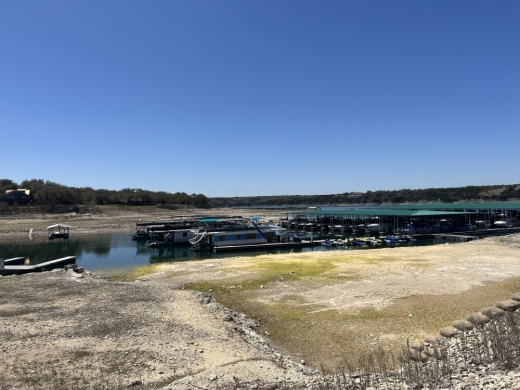Editor note: This story was updated for correct Kevin Critendon's title and department.
The city of Austin will enter into its first phase of drought response, with tightened water restrictions as levels fall in Central Texas lakes.
“Because we're moving into a historically dry part of the year, and our reservoir levels are lower than we would prefer, it's important that we be very judicious with the water that we do in fact use,” said Kevin Critendon, assistant director for environmental, planning and development services at Austin Water.
On May 27, City Manager Spencer Cronk ordered stage-one water conservation efforts to begin June 6. For the past three years, Austin has been in the lowest stage of its Drought Contingency Plan. But according to forecasts from the Lower Colorado River Authority, Lake Travis and Lake Buchanan will fall below 1.4 million acre-feet in the following days, triggering heightened restrictions.
"The more responsible we are, the longer we extend that water supply storage until we get significant rain again,” Critendon said.
Under Stage 1 regulations, watering hours for automatic irrigation systems will be reduced by two hours, allowed from only 7:00 p.m. to 8 a.m. compared to 7:00 p.m. to 10:00 a.m. previously.
(Courtesy Austin Water)
Any restrictions from the prior conservation stage will remain in place. Residents may only use hose-end sprinklers twice per week and once per week for automatic irrigation systems.
The Austin City Council amended the penalties for water conservation violations May 5. Previously, violations could result in a $250 to $1,000 fine. Violations now start at only $25 for residents but increased to $500 for certain commercial facilities and go up as drought stages advance.
“My hope is that we won't be assessing a lot of penalties, because people will understand the importance of water conservation,” said Kathie Tovo, Austin City Council Member. “We need to work together in our community to make sure that we've got the water we need for all of our uses.”
According to Mark Wentzel, Texas Water Development Board hydrologist, 80% of Texas is experiencing drought. As Texas’ water supply system is designed to handle multi-year droughts, Wentzel said it will take two or three years to see if that system can hold up against increasingly warm and dry weather.
“We need to conserve now, just to be safe,” Wentzel said “There's never a bad time to conserve water in Texas."





